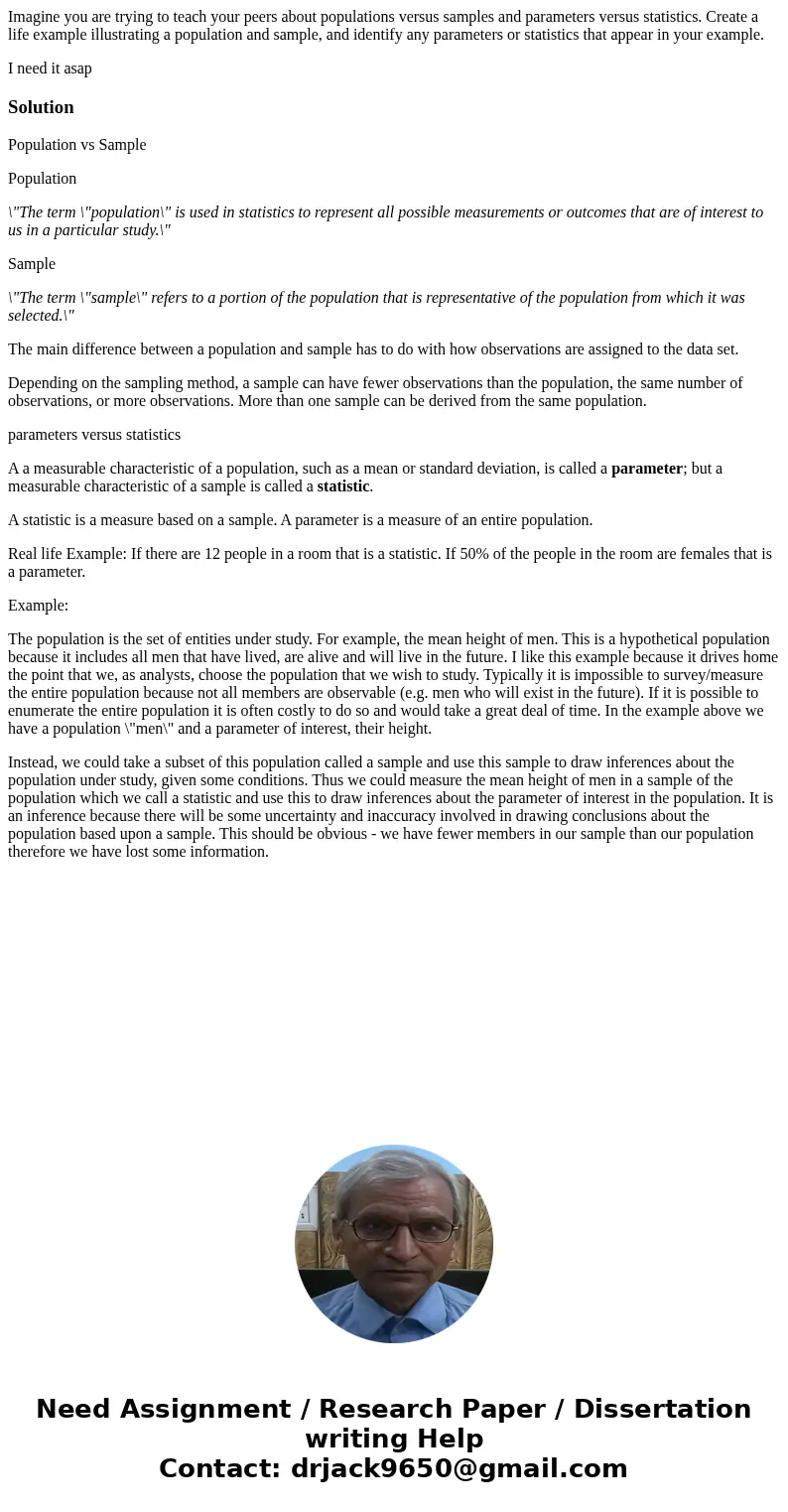Imagine you are trying to teach your peers about populations
Imagine you are trying to teach your peers about populations versus samples and parameters versus statistics. Create a life example illustrating a population and sample, and identify any parameters or statistics that appear in your example.
I need it asap
Solution
Population vs Sample
Population
\"The term \"population\" is used in statistics to represent all possible measurements or outcomes that are of interest to us in a particular study.\"
Sample
\"The term \"sample\" refers to a portion of the population that is representative of the population from which it was selected.\"
The main difference between a population and sample has to do with how observations are assigned to the data set.
Depending on the sampling method, a sample can have fewer observations than the population, the same number of observations, or more observations. More than one sample can be derived from the same population.
parameters versus statistics
A a measurable characteristic of a population, such as a mean or standard deviation, is called a parameter; but a measurable characteristic of a sample is called a statistic.
A statistic is a measure based on a sample. A parameter is a measure of an entire population.
Real life Example: If there are 12 people in a room that is a statistic. If 50% of the people in the room are females that is a parameter.
Example:
The population is the set of entities under study. For example, the mean height of men. This is a hypothetical population because it includes all men that have lived, are alive and will live in the future. I like this example because it drives home the point that we, as analysts, choose the population that we wish to study. Typically it is impossible to survey/measure the entire population because not all members are observable (e.g. men who will exist in the future). If it is possible to enumerate the entire population it is often costly to do so and would take a great deal of time. In the example above we have a population \"men\" and a parameter of interest, their height.
Instead, we could take a subset of this population called a sample and use this sample to draw inferences about the population under study, given some conditions. Thus we could measure the mean height of men in a sample of the population which we call a statistic and use this to draw inferences about the parameter of interest in the population. It is an inference because there will be some uncertainty and inaccuracy involved in drawing conclusions about the population based upon a sample. This should be obvious - we have fewer members in our sample than our population therefore we have lost some information.

 Homework Sourse
Homework Sourse